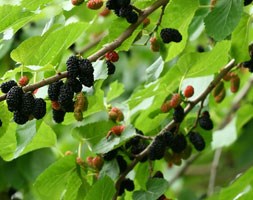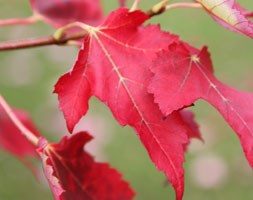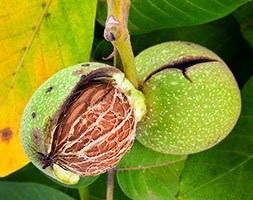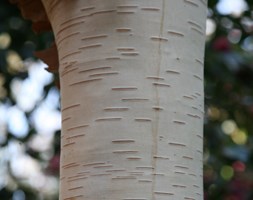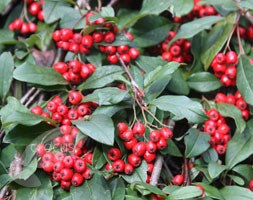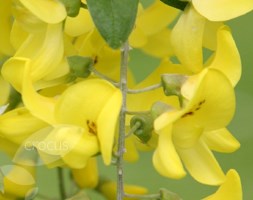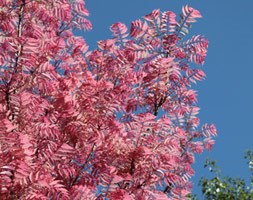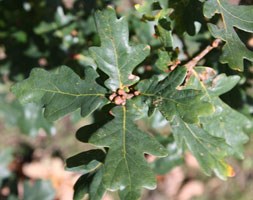New products at Crocus
by Sarah - October 10th, 2015.Filed under: Crocus, New Products.
Crocus just added these new lines
Morus nigra (black mulberry) £89.99
Position: full sun Soil: moist, well-drained soil Rate of growth: slow-growing Flowering period: May to June Flower colour: inconspicuous pale green Other features: large, raspberry-like fruit (August to September) Hardiness: fully hardy A stately tree with heart-shaped leaves and delicious, slightly acidic raspberry-like fruit in late summer. The black mulberry is a long lived tree and is perfect for growing as a specimen as it has a more attractive shape than the white mulberry, with low gnarled branches. This also makes it easier to pick the sweet fruit, though it will take a number of years before it starts to produce its bumper crop. Keep in mind that these plants generally take around 7-10 years to produce fruit and ours are already 3-4 years old. Garden care: Prepare the ground well before planting. Plant in full sun out of cold, drying winds. Stake for the first few years and prune in winter, as the trees ‘bleed’ at other times of the year. Little pruning is needed however, only to remove low, dead, diseased or crossing branches.
Acer rubrum (red maple) £84.99
Position: full sun or partial shade Soil: fertile, moisture-retentive, well-drained neutral to acid soil Rate of growth: average Flowering period: April to May Flower colour: yellow Other features: brilliant red in autumn tints Hardiness: fully hardy Deeply lobed, dark green leaves turning brilliant red in autumn and tiny clusters of red spring flowers. This beautiful, round-headed, red maple makes an excellent ornamental feature in a large garden. Although the tree tolerates some lime the best autumn colour is achieved on fertile, moisture- retentive, neutral to acid soil in full sun. Garden care: Add a top-dressing of a multi-purpose fertiliser around the base of the plant in late spring. No routine pruning is required, just remove any dead, damaged or crossing branches in late autumn or winter when they are fully dormant.
Juglans regia (common walnut) £79.99
Position: full sun Soil: deep, fertile, well-drained soil Rate of growth: fast-growing Flowering period: May to June Flower colour: greenish yellow male catkins and inconspicuous female flowers Other features: best planted in a sheltered spot so that spring frosts won’t damage the emerging foliage Hardiness: fully hardy A fine, deciduous tree with large pinnate leaves that give off an acrid aroma when crushed. In late spring and early summer, inconspicuous flowers are produced which are followed in autumn by one of the most valuable nuts grown in Britain, walnuts. A good specimen tree for a large garden or a park. Garden care: Requires minimal pruning. Remove any broken, diseased or crossing branches in late summer to early winter prevent bleeding. When planting incorporate lots of well-rotted garden compost in the planting hole and stake firmly.
Betula utilis var. jacquemontii ‘Grayswood Ghost’ (himalayan birch) £79.99
Position: full sun or lightly dappled shade Soil: moderately fertile, well-drained soil Rate of growth: fast-growing Flowering period: March Flower colour: yellowy-brown male catkins Other features: one of the best white bark birches Hardiness: fully hardy A rare and attractive tree with very glossy green leaves that turn bright yellow in autumn. It is one of the best white-barked birches with glowing white, smooth bark and yellow catkins in spring. It is best grown as a specimen, in both a small or large garden, where the brilliant bark can been seen to its best effect. The white bark, develops fully when the tree is around 8 years old. All the Betulas we supply are single-stemmed, but they can be planted close together to creat a multi-stemmed effect. Garden care: Birches dont need much pruning, but you may want to remove any diseased or crossing branches. It is essential that any pruning work is carried out between late summer to mid winter as the sap will ‘bleed’ heavily at other times. When planting incorporate lots of well-rotted garden compost in the planting and stake well.
Cotoneaster ‘Hybridus Pendulus’ (standard cotoneaster) £79.99
Position: full sun or partial shade Soil: moderately fertile, well-drained soil Rate of growth: average Flowering period: June Flower colour: white Other features: the seeds of the fruit may cause mild stomach upset if ingested Hardiness: fully hardy Pretty, small white flowers in June followed by showy, bright red, autumn berries. This upright evergreen or semi-evergreen shrub forms a lovely tree with weeping branches when grown as a standard. Like most Cotoneasters, it can tolerant a wide range of conditions including dry soil. Garden care: In late spring or early summer after flowering lightly cut back any branches that spoil the symmetry of the plant and apply a generous 5-7cm (2-3in) mulch of well-rotted garden compost or manure around the base of the plant. In autumn trim back lightly any branches that obscure the display of fruit.
Laburnum alpinum Pendulum (scotch laburnum) £79.99
Position: full sun Soil: well-drained soil Rate of growth: fast-growing Flowering period: May to June Hardiness: fully hardy A small, spreading tree with weeping branches that is perfect for smaller gardens. In late spring and early summer slender racemes of brilliant, golden-yellow flowers seem to drip from the branches creating a luminous display. An excellent specimen plant, that is best appreciated when not overcrowded. Garden care: When planting, incoporate lots of well- rotted manure or garden compost into the planting hole and stake firmly. Laburnums dont need much pruning, but you may want to remove any diseased or crossing branches. It is essential that any pruning work is carried out between late summer to mid winter as the sap will ‘bleed’ heavily at other times.
Toona sinensis ‘Flamingo’ (Chinese mahogany) £79.99
Position: full sun Soil: fertile, well-drained soil Rate of growth: average to fast Flowering period: July Flower colour: greenish white Hardiness: fully hardy (borderline) A deciduous, often multi-stemmed tree, which makes a fine specimen in a sunny garden. In spring, the big, pinnate leaves emerge a bright salmon pink and gradually change colour to creamy yellow and later rich green in summer. The clusters of greenish white, cup-shaped flowers that appear in summer seem to dangle from the ends of the branches and are loved by insects. All parts of the plant are scented and the wood is often burnt in temples in Eastern Asia to infuse them with its delicate scent. The timber is also valuable for making furniture as it is very duarble and easy to work with. Garden care: In late spring or early summer after flowering lightly cut back any branches that spoil the symmetry of the plant and apply a generous 5-7cm (2-3in) mulch of well-rotted garden compost or manure around the base of the plant. In autumn trim back lightly any branches that obscure the display of fruit.
Quercus robur (common oak) £74.99
Position: full sun or partial shade Soil: any deep, well-drained soil Rate of growth: slow-growing Flowering period: May to June Flower colour: insignificant male and female flowers in separate trees Other features: deciduous, large tree Hardiness: fully hardy A majestic tree with dark green, irregular, rounded-lobed leaves and clusters of neat acorns sitting in nobbly cups. Oaks are steeped in history, hiding legendary figures, such as Robin Hood and King Charles II in their sizable trunks. Known for their large size and longetivity, they should be planted for prosperity. They tolerate most soils, except shallow soil, and in large gardens and parks are ideal as specimen trees. Garden care: Requires minimal pruning. Remove any broken, diseased or crossing branches in late autumn or winter. When planting incorporate lots of well-rotted garden compost in the planting.
Quercus rubra (red oak) £74.99
Position: full sun or partial shade Soil: any deep, well-drained, lime-free soil Rate of growth: fast-growing Flowering period: May to June Flower colour: insignificant male and female flowers in separate trees Other features: vivid autumnal colours Hardiness: fully hardy One of the fast-growing oaks with dark green, sharply lobed leaves which turn attractive shades of red, yellow and brown before falling in autumn. An attractive tree that is capable of adapting to most conditions, including industrial areas, though it does require lime-free soil. Garden care: Requires minimal pruning. Remove any broken, diseased or crossing branches in late autumn or winter. When planting incorporate lots of well-rotted garden compost in the planting.







